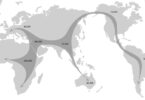If you have ancestors who moved to the United States from foreign countries, you may find documents about them written in their native language. The same will almost definitely be true if you are researching your ancestors in their homelands. So, how do you learn what important and/or fascinating information those documents contain if you do not speak or read the language?
Fortunately, a foreign language document does not mean the end of your research trail. There are some ways around this issue. If you find foreign language documents related to your ancestors and want or need to use them, here is how to do it.
Use Google Translate or Your Translating App of Choice — This is the obvious one, and it works, but do it with caution. Most translating apps can translate individual words as well as entire pages of text. You can do it on your computer if you have a scan of the document, or on your phone using the camera if you have to do the translating at the site where the document is located. It is a great tool for your genealogy. However, because apps like Google Translate are machines, with no human oversight of their work, they can sometimes get things wrong. This can be an issue if you don’t speak or read the language. Usually, you can get the gist of the meaning of an overall document, even if the translator gets some words or sentences wrong.
Use a Genealogical Word List on FamilySearch — The FamilySearch website is one of the Internet’s best free tools for researching your family history. In addition to having a huge collection of worldwide genealogical records, it has other tools to help you learn more about genealogy. One of these is the Words List, which lets you become familiar with genealogically relevant words that you can use to search online records about your ancestors. You can add keywords from the foreign language document you are using, typically words that appear a lot in the document. You can then check the FamilySearch Wiki for that language to find genealogical terms from your list translated from that language into English.
Learn Some Basic Words in the Language in Question — This is probably the easiest way to make your way through a foreign language document. You do not have to learn the entire language, of course. Just learning a few that appear in documents a lot, or a few that you know are genealogically important is enough for you to accurately make your way through most foreign language genealogy documents. You can do this by using a free language learning app, or buying a dictionary that translates that language to English.
Hire a Translator — If translating is more work than you want or have time to put into the document, you can always hire a translator. Native speakers of the language can be found online, and are the most reliable way of translating a foreign language genealogy document. Small projects shouldn’t cost very much.






